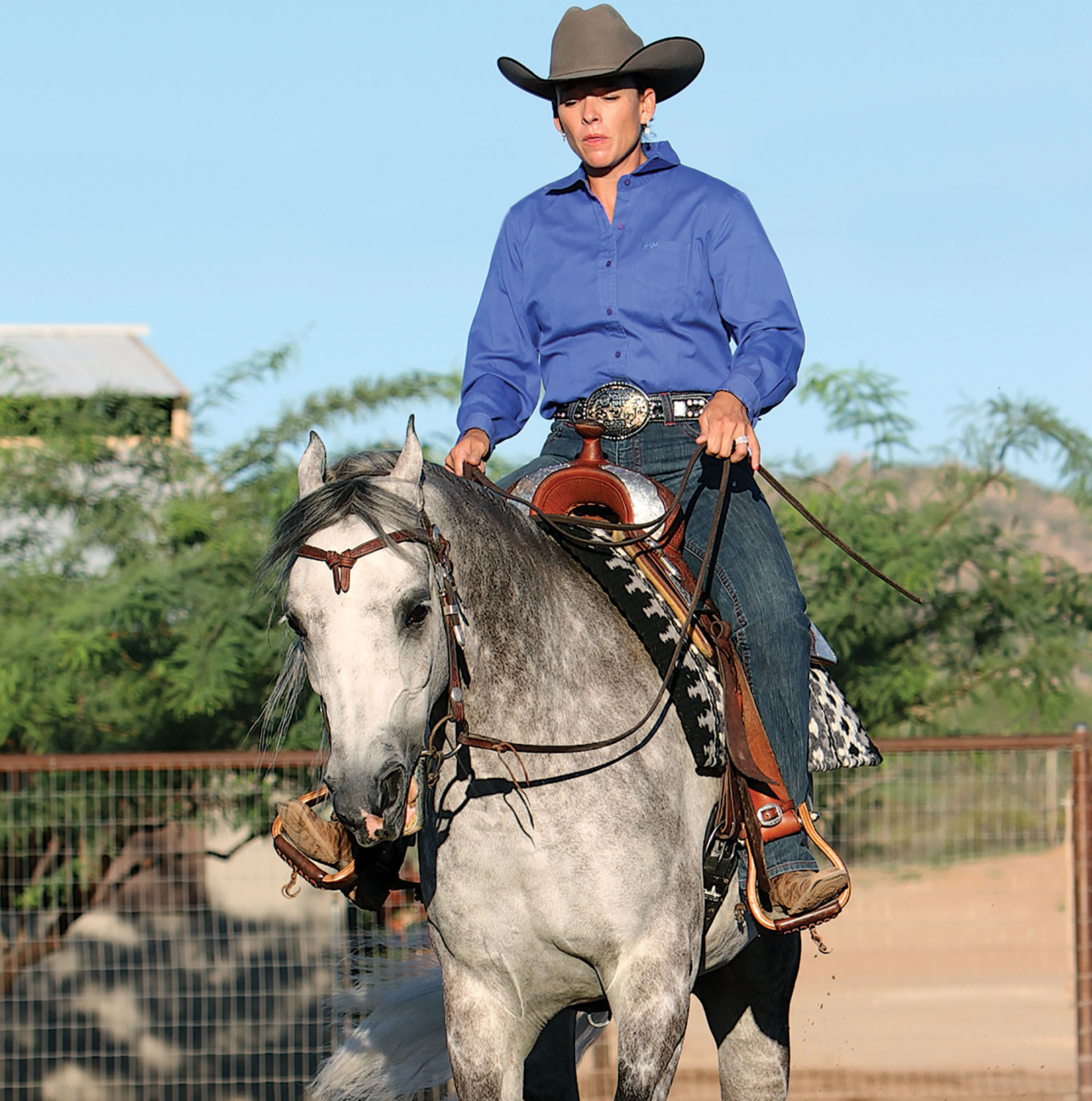Arabians are fun to ride. I’ve been on only a few in my lifetime, as opposed to many more Quarter Horses and Paints. But I’ve always had a soft spot for this breed, celebrated throughout history for their beauty (as in the stone painting, below) and their brains.
Products we feature have been selected by our editorial staff. If you make a purchase using the links included, we may earn a commission. For more information click here.

Arabians are also highly sensitive, which can be a plus or a minus depending on how you handle them.
“Arabians remember!” cautions reining trainer Crystal McNutt , who’s earned success with Arabians and Half-Arabians as well as with stock breeds. “That one day you had a fight with them, they’ll remember it. They’re not a horse you can miss a step of training with. But if you’re consistent in your approach, they’re just wonderful horses.”
Crystal, a National Reining Horse Association top-20 professional, first jumped into the spotlight at the age of 9, when she was mentioned in Sports Illustrated for being the youngest person ever to win a U.S. Arabian Nationals Top-10 placing.
“I grew up with Arabians,” says the Scottsdale, Arizona, horsewoman. “The purebreds, especially, are whip smart and highly inquisitive. They’re personable and always interested in what you’re up to. They’re bright, happy horses, totally tuned in to people and eager to please.”
Their sensitivity and hotter temperament do require intelligent handling, she adds. “Some people get into trouble with Arabians when they interpret the horses’ reactions as not learning as well as, say, a Quarter Horse. And in reining, it’s true Arabians may take a little longer to train. They’re not as physically strong, and they’ve not been bred specifically for reining as long as the stock breeds have—although that’s now beginning to change. But a Quarter Horse’s specialized breeding means it’s a little easier for him to do what reining demands.
“Still,” she adds, “if you don’t skim over any steps and you never try to scare them into anything, Arabians learn just fine.”

Crystal’s observations dovetail with what animal scientist Temple Grandin, PhD, told me when I wrote a feature with her a few years back on how horses think. She grouped Arabian horses with other fine-boned, fear-prone animals that have a low tolerance for rough handling. But she also stressed that Arabians’ intelligence and high awareness make them highly trainable by the right methods.
Read more from Temple Grandin with Temple Grandin’s Guide to Working with Farm Animals.
Moreover, notes Crystal, once they are trained, they make a super ride. “They’re so light and easy! So compliant. I find that when I get a Quarter Horse now, I need one that’s a little lighter. I’m definitely not into the ram-and-jam method of training.”
If you’re interested in trying an Arabian, Crystal says a half-bred is a great place to start.
“Most amateurs accustomed to stock breeds may find a Half-Arabian easier to ride in the beginning. Purebreds, often hotter, are a little trickier, as they’re so sensitive to whatever you have going on.”
In the end, she says, it comes down to treating every horse as an individual and finding the approach that works best for each.
“Be a conscious horse trainer, fully aware of the animal under you,” she says. “If you are, Arabians can be a great fit for you.”
WANT MORE? CRYSTAL DEMONSTRATES WITH ARABIANS:

